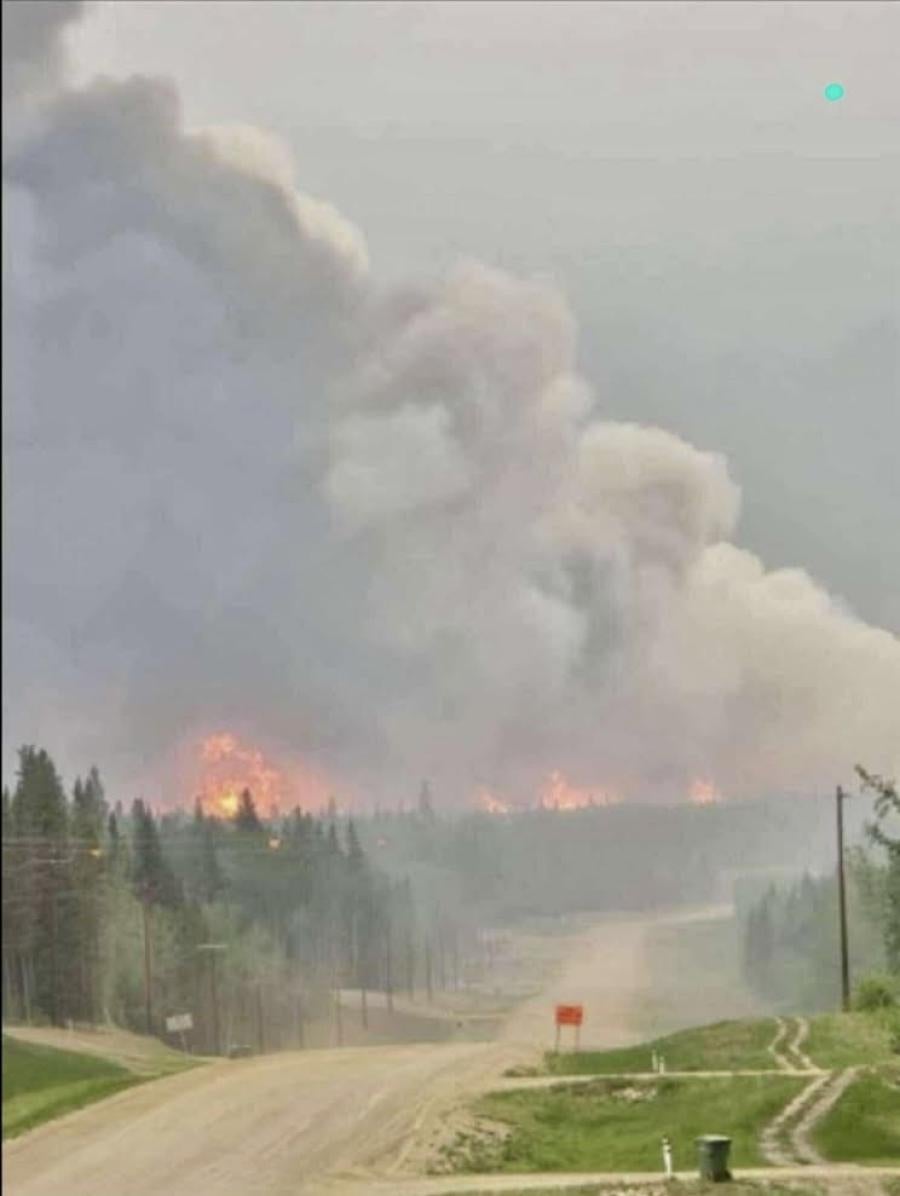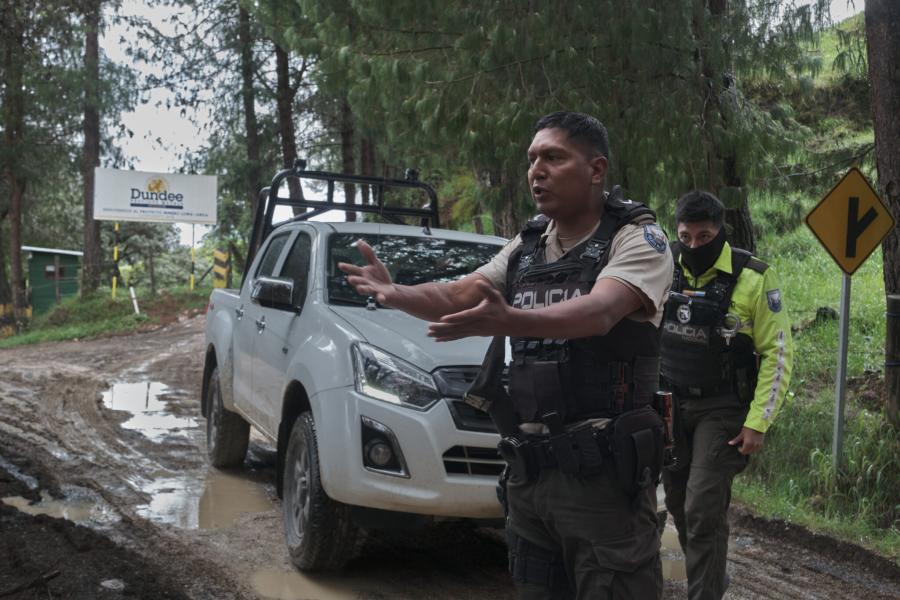When print and electronic media first entered Indian Country, they came as part of a wave of Western cultural influences that exerted strong assimilating pressures on Aboriginal communities. Such metaphors as `neutron bomb television' and `cultural nerve gas' captured this negative influence and the corrosive impact of mainstream media on Aboriginal culture.
In the spirit of adaptation, many Aboriginal communities sought to harness the media to better serve the goals of preserving indigenous culture, language, and identity. In northern Canada, where I live and work, these efforts have led to the birth of a national Aboriginal TV network and half a dozen Aboriginal radio networks that broadcast to hundreds of communities in dozens of indigenous languages. The effort to turn neutron bomb television and cultural nerve gas into what one observer calls "electronic smoke signals" has been largely successful here.
This issue of Cultural Survival Quarterly is dedicated to telling the story of how indigenous peoples around the world have fared in their struggle to harness the media to serve their needs and to counterbalance the assimilating influences of mainstream media. Articles will look at conditions in the South Pacific, India, Nepal, Africa, United States, and Canada. Though the specific circumstances vary a great deal, the story is remarkably similar and the successes quite notable.
Fred Lepine, a Metis artist and multimedia expert in the Northwest Territories, Canada, has written about the profound differences between Western, `linear' thought and indigenous `circular' or `round thinking.' His hope for the information age is that Aboriginal people will harness the power of contemporary communications technology to strengthen traditional ways of thinking, and to strengthen indigenous culture and identity.
The collision between linear and circular thinking is nowhere more striking than in the historical struggle to provide an Aboriginal voice in the media. The media has been a doubleedged sword, essential as a tool to preserve Aboriginal languages and cultures, yet potentially a tool to destroy those very same languages and cultures. There have been many success stones, several of which are chronicled in the following.
At first, mainstream or Western media had a corrosive impact on Aboriginal peoples and their cultures. Both metaphors of `neutron bomb television' and `cultural nerve gas' are haunting, powerful, and suggest how high the stakes are in the struggle among Aboriginal people to gain a voice in the media to protect their languages and cultures-not destroy them.
Dr. Bruce Smith and M.L. Cornette see much hope in the struggle among Native Americans to gain an Aboriginal media voice. They write that "[t]oday, Native Americans are taking greater control of the electronic media that reach their communities by operating radio and television facilities of their own. As a result, the media are becoming allies in their struggle for cultural survival." They cite Gordon Regguinti who calls Native American radio "an electronic smoke signal," a positive metaphor suggesting that the struggle to overcome cultural nerve gas and neutron bomb television can be successful if media is adapted to meet the needs of the indigenous community. Smith and Cornette also look at some problems facing Aboriginal radio, such as recent financial challenges caused, in part, by shrinking government funds, as well as a potentially inherent incompatibility between the nature of mass media and native culture. In spite of these problems, however, they are optimistic about the future and see an important contribution being made by Aboriginal media in the struggle to preserve Aboriginal culture.
Jennifer David explores the birth and evolution of Canada's unique Aboriginal television network, Television Northern Canada (TVNC), which broadcasts in over a dozen Aboriginal languages to an audience of 100,000 residents across Canada's vast and sparsely populated Far North. TVNC will soon transform into Canada's first national Aboriginal television network, which will serve over one million Aboriginal Canadians. How can such a national netwok contribute to the preservation of Aboriginal languages and cultures? The jury is still out, but as the network expands, it will raise questions about how to serve an audience of increasing ethnic and linguistic complexity The lessons provided from other parts of the world shed some light on these issues.
Frederick Noronha examines similar issues and challenges in India which must accommodate 1,652 different languages spoken by a population of nearly one billion, spread out over 3.2 million square kilometers. In India, the movement to introduce community radio and decentralize the statecontrolled monopoly on broadcasting is an unprecedented opportunity Noronha writes that "this could be the right time...to seize opportunity created by the liberalization of the electronic media as Indian radio is shifting from government monopoly to commercialized broadcasting." He points to neighboring Nepal where the first independent FM radio station was recently launched with the help of the UN and local NGOs.
In India, problems caused by widespread poverty, limited funds in rural communities, and limited numbers of FM receivers contribute to the problem of harnessing media to serve the many different languages and cultures of that vast country. However, because radio does focus on the rural lower middle classes, unlike TV, Noronha believes radio has broader reach and can be more effectively appropriated by ethnic and linguistic minorities.
In "Media and the Preservation of Culture in Africa," Franz van der Puye writes that "[c]ommunity radio grew out of the need to respect linguistic pluralities and to ensure that people in rural areas were better informed." With over 200 languages on the air today in Africa, van der Puye observes that "still, over a thousand African languages are not heard on the radio."
In addition to inherent problems in representing such linguistically complex societies on the air, financial problems have also been significant in Africa. In television, high production costs have increased pressure on African broadcasters to import non-African products at a fraction of the cost, limiting the effectiveness of television as a vehicle of linguistic or cultural preservation.
The reality of Aboriginal media is a reality filled with real and often difficult challenges -- financial as well as moral. Pressures to assimilate and resistance to freedom of the press among tribal elites contribute to the challenges faced by Aboriginal communicators. Budget problems facing media organizations serving small, isolated markets that are plagued by chronic economic underdevelopment is often fatal to Aboriginal media organizations. Many once prominent Aboriginal media organizations have closed down in recent years.
In the Far North, all five Aboriginal publications serving residents of the western NWT, Yukon, and Alaska have ceased operations in recent years. The Dene radio station serving the Aboriginal people of the western NWT, CKLB-FM, nearly selfdestructed in the early 1990's as it assimilated mainstream media values and temporarily abandoned its commitment to broadcast in Aboriginal languages in order to become a conventional country music station. Its flirtation with assimilation nearly killed the station, but it has since rebounded in recent years, returning to its original values as an Aboriginal language broadcaster.
Just last year, the Navajo Times was locked in a bitter struggle over freedom of the press with Navajo Nation President, Albert Hale, who eventually resigned from office in order to avoid prosecution for ethics violations reported by the Navajo Times. Hale had been a vocal critic of the Navajo Times for printing what he called "rumor and innuendo."
Dr. Lael Morgan compares indigenous media in Alaska and the South Pacific islands, two parts of the world where Aboriginal peoples have struggled to harness conventional media and provide a distinctly Aboriginal voice. She also examines the life and death of Tundra Times, which provided Alaskan indigenous peoples with their first unified media voice. She further examines the failure of Tundra Times to pursue investigative reporting, thus surrendering its responsibility to probe the truth to the mainstream Alaskan media. Prior to its closure, Morgan observes that most of Tundra Times' content was public relations material, with very little `hard' or `bad' news-a far cry from its early days when it helped stop deadly atomic tests on Native land and contributed to the resolution of the historic Alaska Native land claim.
Pressures to avoid `bad news' journalism are omnipresent in rural and isolated areas. Aboriginal media often depends upon government funds to survive, and sometimes the quality of journalism suffers. Tribal values and traditions may not always be compatible with freedom of the press, raising some very difficult moral issues when it comes to press freedom in the Aboriginal community. Morgan examines the struggle for free press in the newly independent nations of the South Pacific and now sees much hope for indigenous media and journalism after the new governments initially sought to curb a free press. She cites William Parkinson, President of the Pacific Islands News Association, who says "[t]he governments are beginning to realize they can't push media around anymore." Despite the death of Tundra Times, Morgan also sees much cause for hope as Aboriginal people gain a voice in both the mainstream press-where more Aboriginal journalists now work-and Aboriginal-owned radio stations that provide a forum to discuss Aboriginal issues.
The theme of this year's Native American Journalists Association (NAJA) meeting on June 17-20 in Tempe, Arizona, is "Two Worlds, Two Views: One Truth." Conference co-chair Ben Winton says the conference will "take a hard look at press freedom in Indian Country. Are tribal newspapers and other media outlets really `owned by the tribe?' Or are they owned by the people? What are the obligations of journalists working in tribal media? Are they writing for the government or the people?"
Dr. Valeria Alia looks at media ethics and race in Nunavut, Canada's newest and predominantly Aboriginal territory in the eastern Arctic. The non-Inuit minority has been increasingly vocal about minority rights issues as Inuit decolonize their homeland and regain political control for the first time in a generation. Alia examines the recently adopted ethical guidelines of the Native News Network of Canada (NNNC), which establish detailed ethical criteria for Aboriginal media in Canada.
Donald Browne writes that "one major reason for indigenous interest in radio was the opportunity it might present to bring fresh life to indigenous language, and might even rescue some of them from extinction." He concludes that "it certainly seems to have worked in a number of cases," though not without a number of problems like how to represent all linguistic dialects, merge broadcasting standards with traditional communication styles, and provide access to young Aboriginal people who often lack language proficiency. The hope, he writes, is that by broadcasting in Aboriginal languages, those languages will have a better chance of surviving. Had media institutions not been harnessed by the Aboriginal community, they would remain potent weapons of assimilation, threatening to erode the very foundation of Aboriginal identity. The dream is that through the continued survival of Aboriginal media, the cultures, languages, and traditions they represent will survive into the next century.
Article copyright Cultural Survival, Inc.



